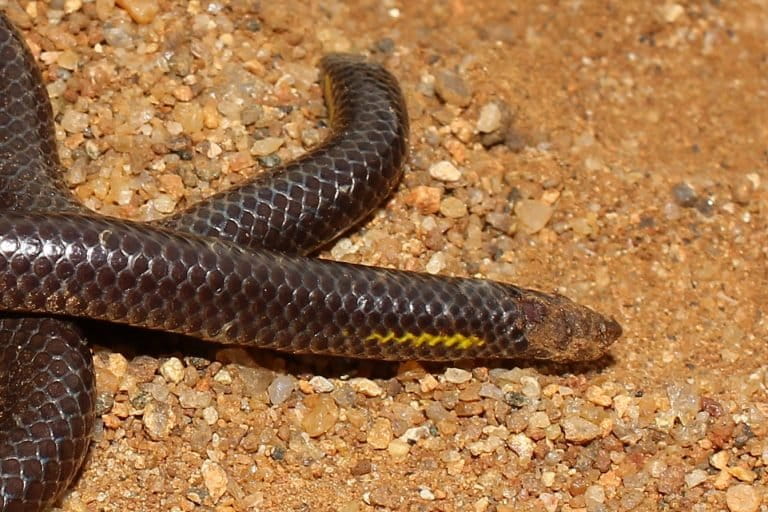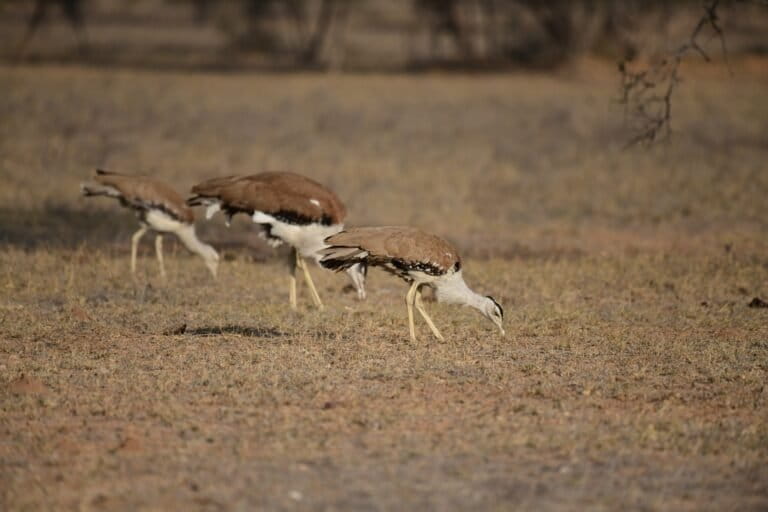- Scientists have described a new species of snake from the Anaikatti hills, a part of the larger Western Ghats ecosystem.
- This non-venomous snake faces threat from habitat loss, roadkills, being killed by humans and a little-understood fungal disease of snakes.
- The species is named Uropeltis bhupathyi to honour the memory of late herpetologist Subramaniam Bhupathy.
About an hour’s drive away from Coimbatore, in the Anaikatti hills, scientists from the herpetology division of Salim Ali Centre for Ornithology and Natural History (SACON) have found a new species of a shieldtail snake that they have named Uropeltis bhupathyi. Although the species is newly named, there is nothing new about the occurrence of this kind of snake in this area. When the rains start, every year, several shieldtails come scurrying out of their burrows.
About a decade ago the same species was spotted by Subramaniam Bhupathy of SACON, who erroneously reported it as a member of Uropeltis ellioti. Bhupathy was one of India’s most respected names in herpetology. Unfortunately, he passed away in an accident during a field expedition in 2014. One of his students V.J. Jins has carried forward Bhupathy’s work on the Uropeltis family of snakes. His detailed research has now shown that the species Bhupathy had thought to be member of Uropeltis ellioti should actually be classified as a new species. Jins named the species Uropeltis bhupathyi in honour of his late professor. He has published his findings in the journal Zootaxa.

One of the most striking differences between Uropeltis ellioti and Uropeltis bhupathyi is the number of ventral scales – the scales found in the belly region of snakes. While samples of ellioti in museums have 167 scales, Jins found that all his samples from the Anaikatti hills contained in excess of 200 scales. Also, the shape and size of scales in the head region is quite different in U. bhupathyi. Morphological evidences were also supported by DNA data, which conclusively proved that U. bhupathyi from Anaikatti is a new species.
U. bhupathyi, like all members of the Uropeltidae family sports a disc like structure in the tail region. It is for this reason that the members of this group of snakes are also called shieldtails. What distinguishes U. bhupathyi from other members of the family is the presence of a yellow-coloured lateral stripe right after the head and another yellow stripe on the underside of the tail.
U. bhupathyi’s diet consists of mainly earthworms and the snake is not venomous. While handling the snake it “shows a tendency to coil around the handler’s hand,” said Jins.
Vivek Sharma, who runs indiansnakes.org and is an expert snake handler, said that the “methodology of research and the justification to prove Uropeltis bhupathyi as new species is satisfactory,” and that “there is no question left to doubt on its taxonomical validity.” In fact, Sharma too encountered a member of this species in the Anaikatti hills in 2015. “It took me five minutes to conclude I am handling an undescribed population,” he said and that he is “glad that the researchers have finally given it a name.”
An important observation that Jins made about U. bhupathyi was that some members of the species showed deformities in the head region that looked like symptoms of a snake fungal disease. Fungal diseases have been reported in snakes outside of India. However, this is arguably the first report from wild snakes in India.
S.R. Ganesh of Chennai Snake Park said, he is “quite curious about the disease” as he hasn’t “come across such instances in uropeltids (the Uropeltidae family) or other snakes during his fieldwork and research in the last fifteen years”. Sharma too reported not having seen such diseases in uropeltids. However, he did say that such diseases are increasing in frequency in snakes living in and around humans. “If wild snakes, living in reserve forests or so-called untouched forests, are also getting infections then we should worry more,” he added.

In the face of threats, the newly described snake could go extinct
Apart from the disease, Jins also found that the U. bhupathyi population in Anaikatti area is threatened by roadkills and changes or loss in habitat. Its high sensitivity to changes in habitat is partly caused by the group’s near exclusive dependence on earthworms as animals of prey. Earthworms are highly sensitive to any change in structure of soil and pesticide or chemical treatment of the soil. Any disturbance to earthworms can be damaging for the shieldtails’ fragile food chain and can cause a population decline.
“Our present understanding says that they [uropeltids] are a range-restricted species and many of them are found in less than 40-50 km of any specific hill like Wayanad, Kudremukh etc. Any kind of disturbance to soil will easily end the population from the area and there is no going back from there in my opinion,” said Sharma.
Ganesh, who has himself been studying uropeltids for years, agrees about the threat of habitat loss. It is likely that the newly described uropeltids (such as U. bhupathyi of Anaikatti or U. shorttii from Yercaud) “will be critically endangered by virtue of being found only in one or two hills, completely outside protected areas. Their habitats are fully susceptible to unchecked human alteration, predisposing them to fast and silent extinction,” he said.
He also talks about the other big threats like “wanton killing by people”. “Studies on people’s perception of snakes reveal that small, less-defensive snakes are likely to be killed by people when seen. Not many locals in estates and plantations spare uropeltids when they turn up during digging. Even women and children bravely kill them off. Sad,” he said. On top of that, pesticides also take a toll, he said.
The present study and some others in the last decade (such as here and here) have improved familiarity with this family of snakes. However, there are still several lacunae in understanding them.
U. bhupathyi is likely to be added to the Data Deficient category in the IUCN Red List of Threatened Species, said Jins. He, however, is hopeful that more digging-based studies will help in awareness of this family of snakes and save them from what Ganesh calls a “silent extinction”.
CITATION:
Jins V.J., Sampaio F.L., and Gower D.J. (2018). A new species of Uropeltis Cuvier, 1829 (Serpentes: Uropeltidae) from the Anaikatty Hills of the Western Ghats of India. Zootaxa, Vol. 4415, No. 3.













